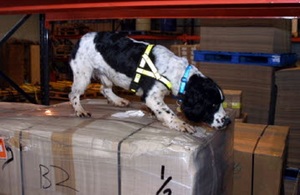Lincolnshire based animal charity wound up and chair disqualified after serious mismanagement
The Commission has disqualified two trustees, including the chair, and the charity has now been wound up, resulting in over £400,000 being redistributed to other charities with similar purposes in the area.
The Alternative Animal Sanctuary was set up to offer permanent care to abandoned and neglected animals across England and Wales.
The Commission opened its inquiry into the charity in March 2017 to examine serious concerns about the charity’s management, including its arrangement with a fundraising agency. As part of the inquiry, the Commission appointed two Interim Managers (IMs) to review the charity’s governance and operation.
The inquiry found:
-
the chair ran the sanctuary on a day-to-day basis and had full autonomy over the charity’s bank account, with no oversight by the other trustees
-
there was a complete lack of basic financial controls and separation between the personal finances of the chair and those of the charity, which exposed the charity’s funds to undue risk and resulted in significant losses to the charity
-
the charity failed to manage conflicts of interest appropriately and did not have a conflicts of interest policy in place, despite its trustee board including three members of the same family
-
the trustees did not keep adequate financial records and repeatedly failed to comply with their legal accounting responsibilities
The inquiry also found that the total income raised from the charity’s arrangement with a fundraising agency from 2008 to 2020 was over £10 million. However, just £1.8 million was directly received by the charity, due to significantly high costs and fees of the agreement. The trustees were not clear with potential donors about how much of their donated funds would go towards the charity’s purposes and failed to comply with their legal duties by not properly overseeing the arrangement, which the Commission finds to be mismanagement and/or misconduct in the administration of the charity.
The IMs determined the Alternative Animal Sanctuary should be wound up on the basis that it was not feasible or viable to address the significant underlying issues at the charity. The charity was removed from the register of charities on 28 June 2021. Its remaining funds, totalling £407,000 were distributed to 10 different charities with similar purposes working in Lincolnshire and surrounding areas. The regulator disqualified the chair from acting as a trustee for the maximum period available of 15 years, whilst one other trustee was disqualified for 10.
Amy Spiller, Head of Investigations at the Charity Commission, said:
This case is a reminder that good governance is more than a bureaucratic detail. The trustees’ conduct and the chair’s clear abuse of their position at the Alternative Animal Sanctuary goes against everything we associate with charity. It is right that those responsible for wrongdoing have been disqualified from serving as trustees.
The public donate generously to charities because they want to make a difference to the causes they care about. This means that when they donate their hard-earned cash, they want to see a high proportion of it spent on the end cause. I’m glad that the charity’s remaining funds have been transferred to active charities supporting the cause they were intended for.
Read the full report of the inquiry into the Alternative Animal Sanctuary.
Ends
Notes to editors:
The Charity Commission is the independent, non-ministerial government department that registers and regulates charities in England and Wales. Its purpose is to ensure charity can thrive and inspire trust so that people can improve lives and strengthen society.


